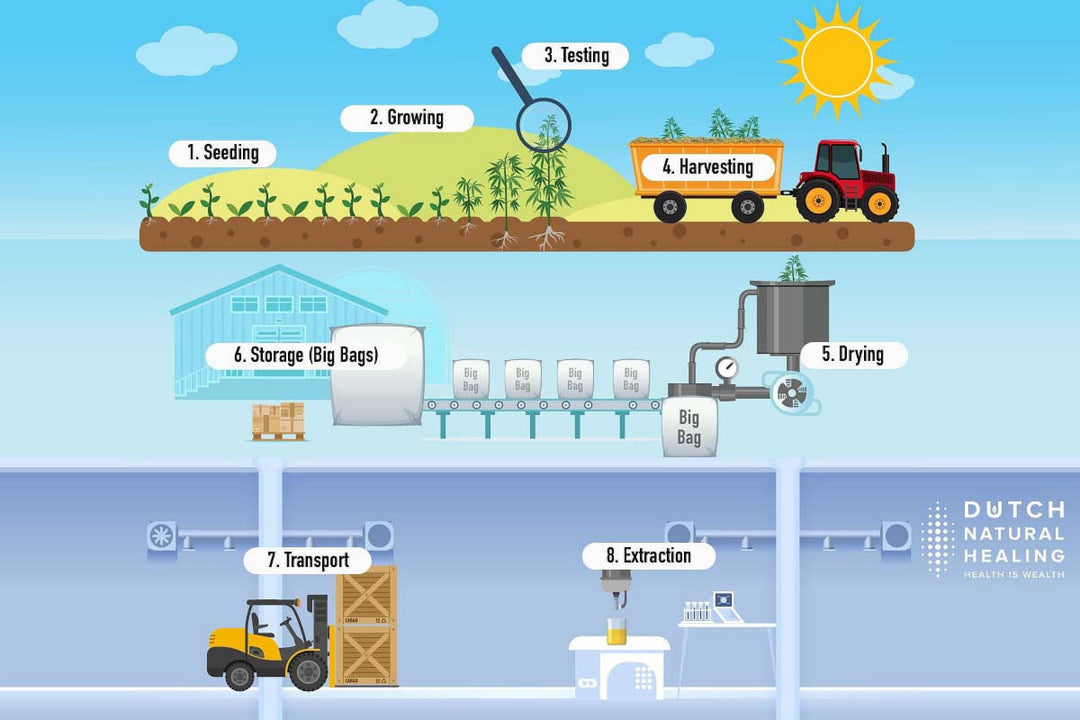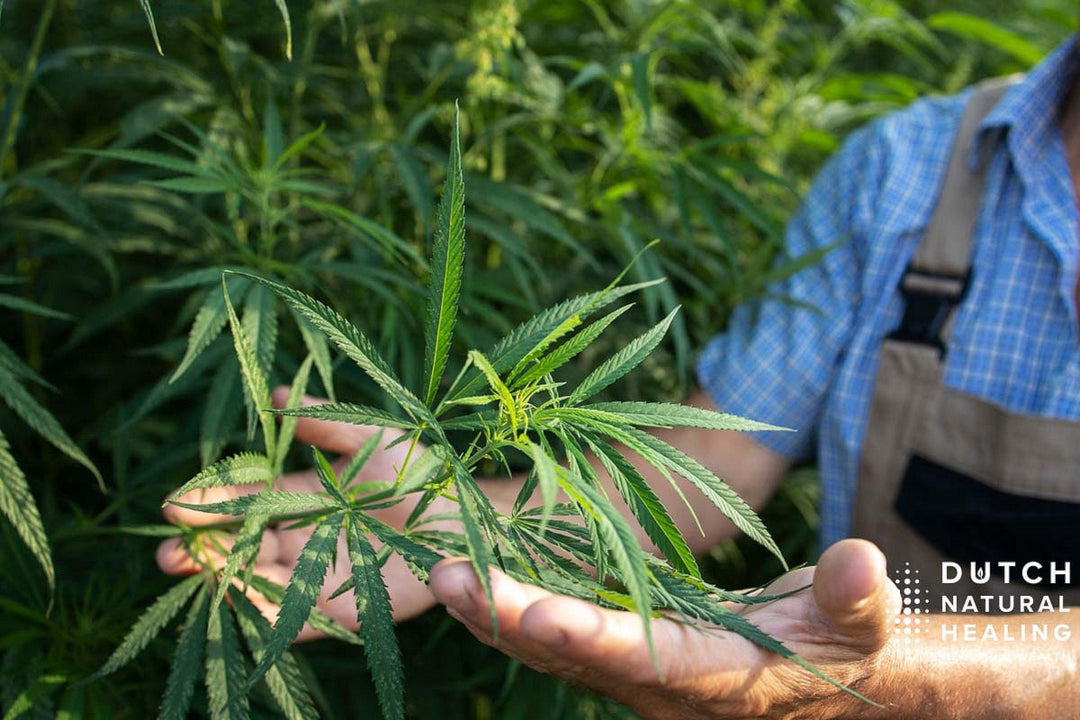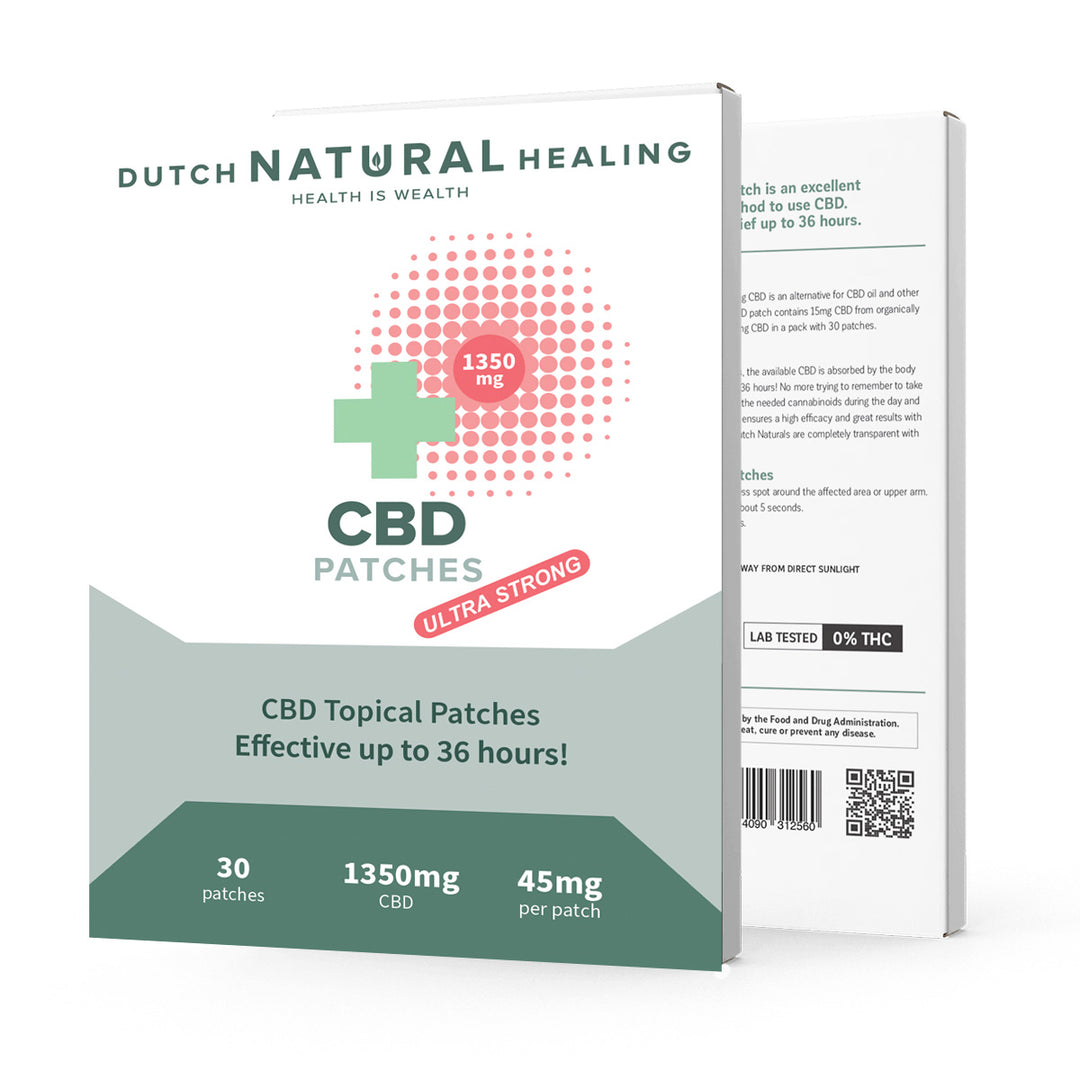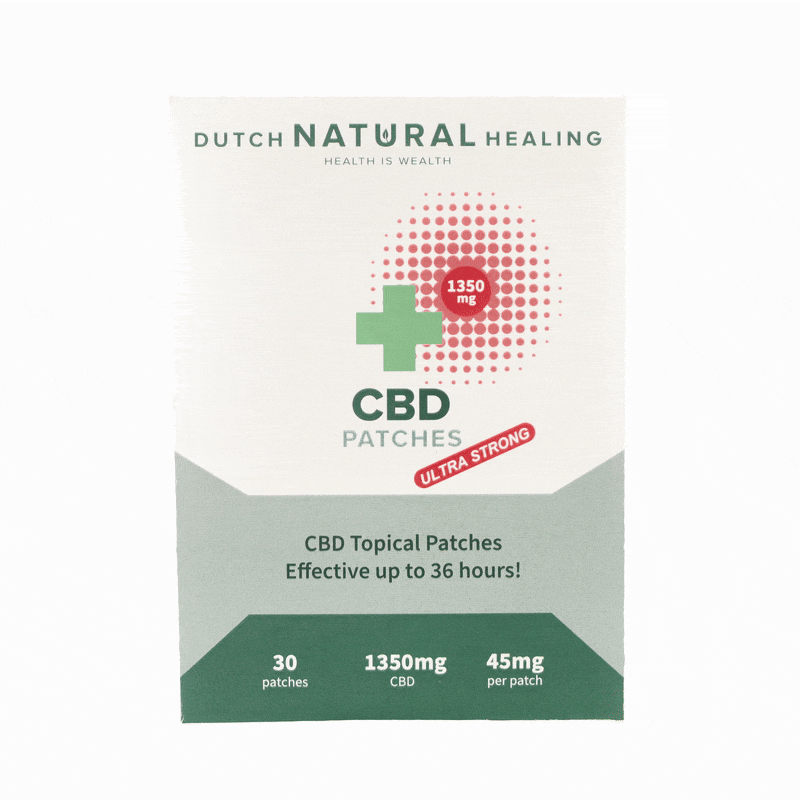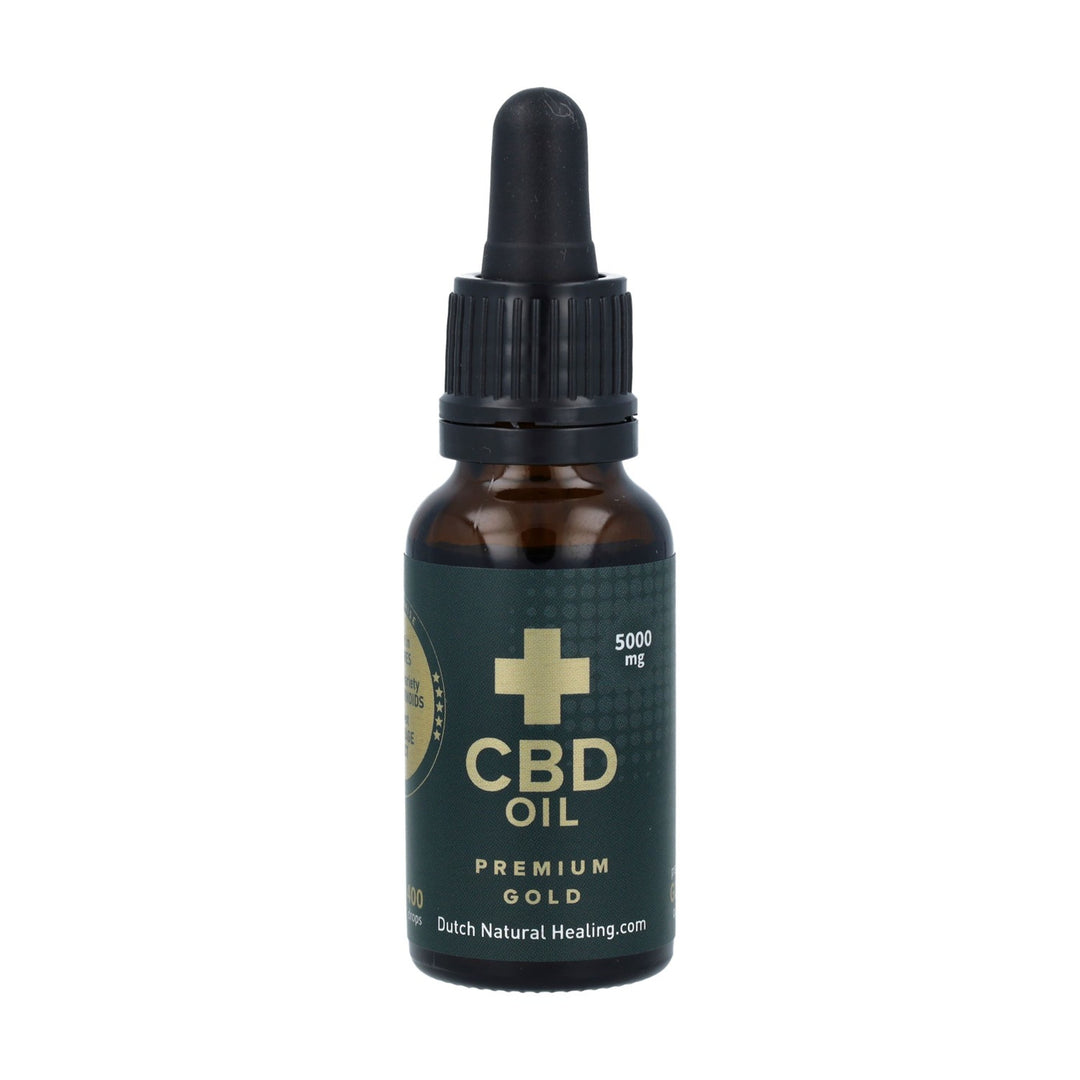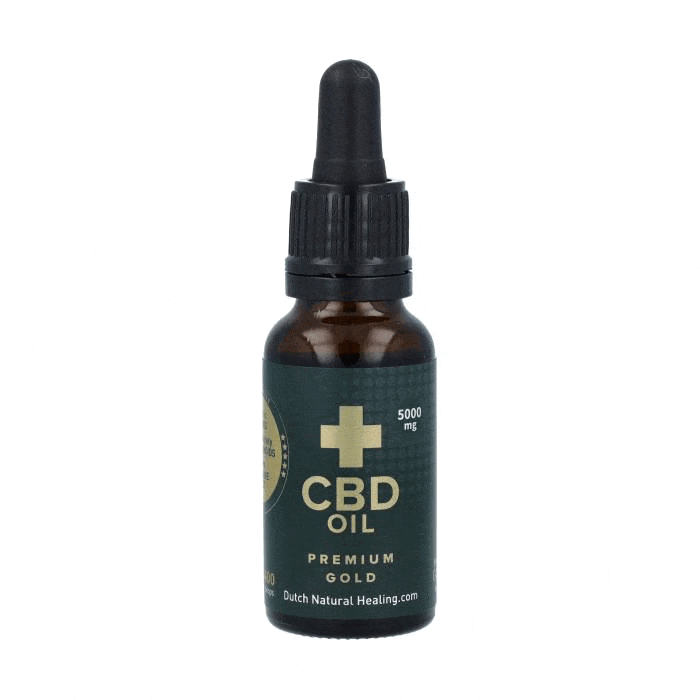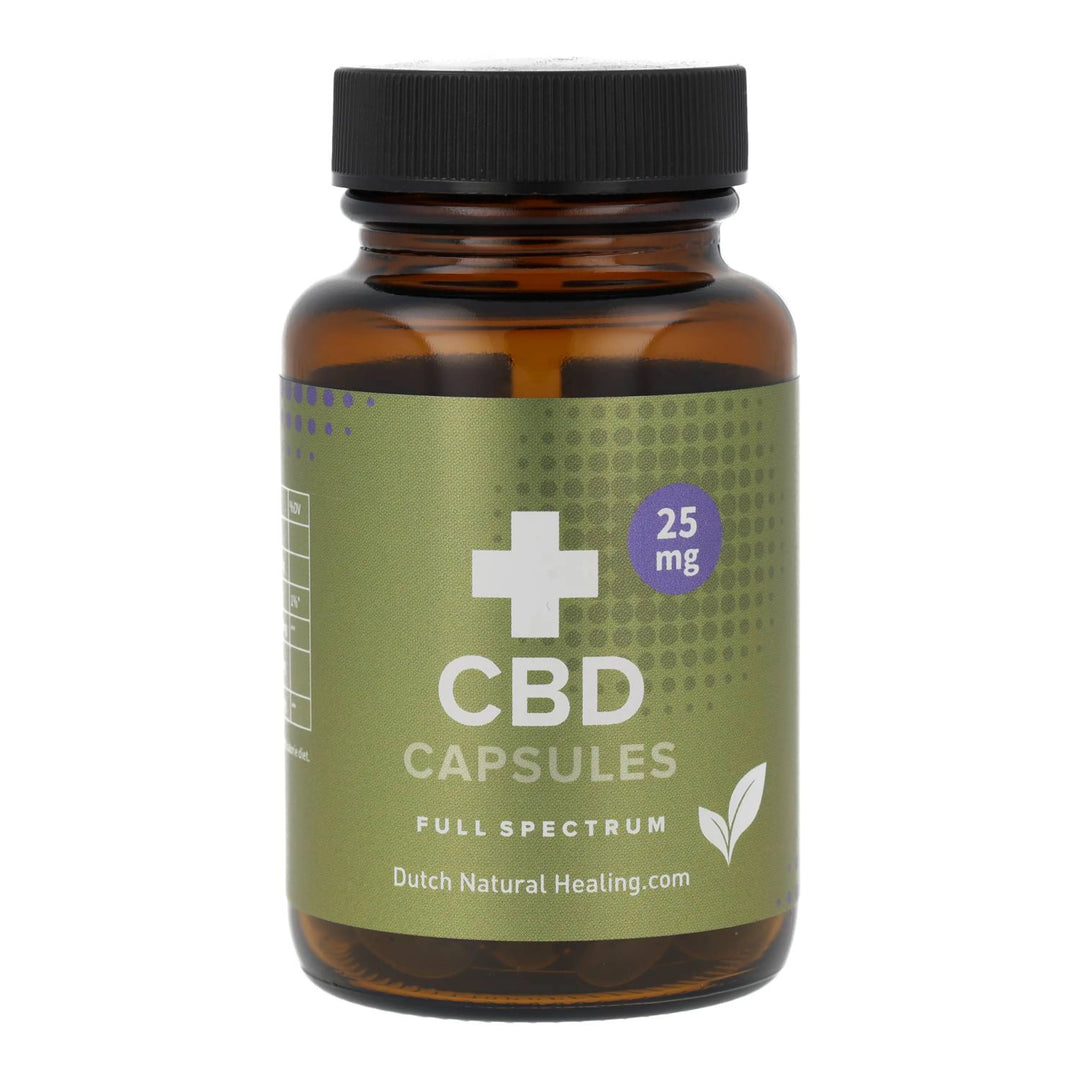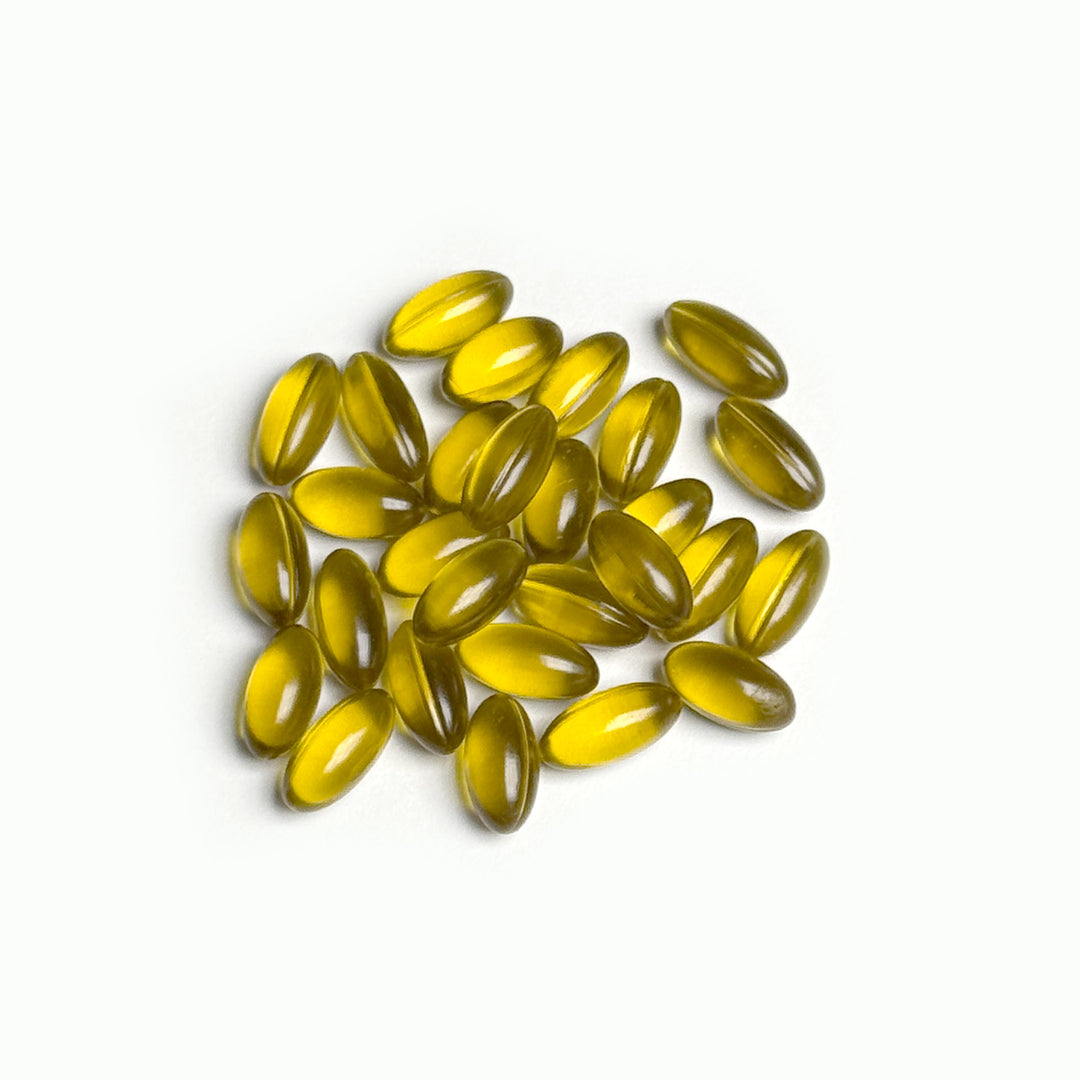CBD Oil production process
Making good CBD oil is not as easy as it looks. As there are many aspects that may impact the endproduct during the production process. In this article we learn more about growing, harvesting and processing hemp for CBD oil; and we get to have a look in the kitchen (or on the farm) of DNH. Discover why our CBD oil - and other hemp supplements - are of superior quality compared to a lot of other brands:

1. Seeding - Sowing hemp plants for CBD oil
For starters it’s very important to know exactly where you’ll sow your plants. Because hemp is known to absorb everything that’s in the soil it’s growing in - especially substances which can be harmful to humans and animals. Considering the fact that we’re about to make a concentrated food supplement from our plant material, it is of the upmost importance to have a trustworthy field.
Though it is also important to know what the distance is from the field to the dryer. Leaf that has been bruised during harvest cannot be kept for a long time. As this will start to compost and scald immediately, spoiling the harvest completely. Moreover, harvest happens using heavy machinery that cannot and may not access the highway - so you’ll have to consider this beforehand.
Obviously it is also essential to choose the right hemp variety for the CBD oil. This requires a lot of knowledge and experience, as hemp varieties may vary a lot. What also varies is the accessibility of certain varieties per country / region. As not all varieties are allowed to be cultivated everywhere; and you will also have to consider the CBD-THC ratio in the plant. Extracts with low CBD are not profitable and extracts with too much THC on the other hand cannot be used either. Our hemp is cultivated in Germany, where we strongly prefer the (here legal) hemp cultivars: finola, ferimon and felina.
The last crucial step in sowing hemp for CBD oil is the space you grant each plant. If you plant them to close to each other, the plants will compete against each other for sunlight. This makes them grow extra tall - causing a lot of energy - and the plant will form less flowers. While that is exactly what we need to make good CBD oil.
2. Growing - The process of cultivating hemp
The cultivation of hemp causes a lot of stress, but costs no energy at all. Because hemp does not need much to survive. No pesticides or fertilizers, only some ground- and rainwater. Only during rare droughts will our farmers decide to give additional water, but more often they decide to let nature take its course.
Considering our agricultural background and affinity with nature, we know exactly what is important for germination of hemp seeds and growing the plant for CBD oil. From this perspective we are surprised every time, to see how much germination power is in hemp seed. This is incomparable to any other plant.
If the weather allows, the seeds will be put in the ground on April fools - and that’s no joke. During the first few months, the plant grows extremely fast aboveground, while the roots and rhizome form below the ground. It it only during the last few months of the growing phase, that the female plant forms her flowers and the male plant forms his pollen. During this phase, it is crucial for the plants to receive enough sunlight. If they do not, the harvest can be pretty disappointing. This is also where our yearly stress and concerns come from - considering we get one shot per year to sow and grow hemp in Northern Europe.
3. Testing - Analyzing which hemp plants are good enough
The last weeks of the grow- and flowering phase are the perfect moment for us to map out our cultivation fields and take samples. These hemp samples are sent to our own laboratory, where we analyze which plants are good enough to harvest and process into our CBD products.
Every hemp plant in the open air, wherever it is in the world, will absorb pesticides, heavy metals and other harmful substances from the soil and atmosphere. After all, that is one of the characteristics of the plant - and also it’s pitfall when you’re planning to make food from that plant. Because as soon as you’re concentrating the useful components in the plant, you will also end up with higher percentages of those harmful substances in your concentrate.
By having a good understanding of which parts from certain fields show elevated concentrations of these substances, that could cause harm to our health at a later stage. We prevent the production of extracts that eventually turn out not to be fit for human consumption, and thus have to be destroyed. Not only does this have a positive effect on our production costs. But this also ensures our customers that they buy a healthy product, compliant to the highest quality standards.
4. Harvesting - Harvesting hemp for CBD oil
When it’s time to harvest, it’s important to know beforehand how and when you want to go about it. Will we use the John Deere X9 combine and get everything off the land at once, including the hemp’s fibre? Or do we use the tractor with a disc mower to only get the flowers off the land? Because with the latter, it is possible to harvest a second time if the timing and weather are correct.
During this harvest method, the hemp plant stays above and uses all of its last energy to grow new flowers. Because a disc mower only cuts off the top 35cm of the plant and throws this on a conveyor belt. The belt then loads the plant material in the harvest truck, after which the unprocessed raw material (biomass) is transported to the drying facility.
The perfect moment to harvest however is not dependent on the weather if you ask us; but rather on the smell and - visible and sensible - amount of trichomes on the flowers. Trichomes are the sticky wax-balls on cannabis- and hemp buds which house the majority of the active ingredients. In that perspective, it’s safe to say cannabis looks a lot like hemp; as they can both produce an amazing aroma and can be very sticky.
DNH in recent years has chosen to only harvest late in the season. This ensures that our extracts - and consumer products - contain a much larger variety of cannabinoids and higher concentrations of terpenes; so we have experienced. And the more cannabinoids and terpenes, the better the effect of CBD oil. This phenomenon is called the entourage effect and is of great importance to the quality of hemp oil.
5. Drying - Drying the harvest for production
Besides the growing and harvesting part, it is also important to know beforehand how you plan to dry your harvest. A coal-fired dryer for example uses direct combustion heat. This means it’ll quickly dry your plant material; but will probably also release a large concentration of PAH’s onto the plant material. This makes the whole harvest unsuitable for human consumption, as PAH’s (polycyclic aromatic hydrocarbons) are extremely cancerous. This goes for all dryers using direct heat, by the way.
Though there is another disadvantage to drying with heat. As only the slightest temperature change already evaporate the most volatile terpenes. While causing other chemical processes in the biomass which decrease the quality of the eventual product.
For the best results, hemp for CBD oil is therefor dried indirectly using so-called heat exchangers. So DNH’s biomass is not dried with heat, but rather using air-dryers thanks to our smart and solution-oriented farmers. With no heat, we ensure the potency of our biomass is not impacted.
6. Storage - Storing hemp for later use
The dried material is immediately packaged with nitrogen in big bags, to then be put away in a dark and cool spot in our warehouse. This helps to keep the product stable and prevents the loss of terpenes during the storage of these raw materials. Moreover, it prevents cannabinoids to oxidate, and change from CBD-Acid to CBD, for example.
7. Transport - Biomass transported to extraction factory
Based on our customer’s needs and the demand for CBD oil, we transport our biomass from the storage to the extraction factory. All the while making sure the quality is not impacted in any way. By using enough protective packaging material, to prevent bruising the material and other external influences to impact the material’s quality.
8. Extraction - CO2-extraction for clean CBD extact
In the extraction factory, most of our extracts are obtained using a super critical CO2-method. This is a popular technique used to separate cannabinoids and other useful substances from the plant material, resulting in a clean extract. The plant material is exposed to a gas inside a closed-loop system, extracting the cannabinoids and terpenes (amongst other things) from the plant material.
Then the extracts are tested again on potency and exact contents in the factory. This way we know exactly, to the microgram, what is in the hemp extract. Only when the extracts comply with all laws and regulations - and don’t contain too much THC, for instance - are they released so we can process them in our ISO-certified CBD production facility.

